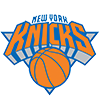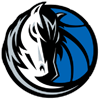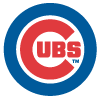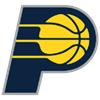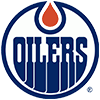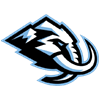During the lockout I'm using some of this extra time to add extra players and revise other players to our MLB player projections, and I thought I'd write about a handful of these players in the process. I did about 500 in our initial run of projections, but I'm hoping to end up around 700 by the time we hit mid-March. These player blurbs won't be deep player dives, but perhaps a quick overview of what I find interesting or noteworthy about that player. Or in other cases, where I've adjusted existing projections, it's a case where I've done a few drafts and decided that I was too low or, in many cases, too high on a particular player. Let's start with three added projections.
Projections Added
Ha-Seong Kim, Padres - Kim really struggled in his stateside debut with the Padres last season and doesn't have a full-time job lined up this year, even after Adam Frazier was traded to the Mariners. The Padres will still be busy after the lockout ends — could they bring in another bat with Tommy Pham presumably leaving? Will they shed Eric Hosmer's contract in a deal? Who fills the DH slot if the league goes to a universal DH?
I'm not ready to write-off Kim as a total bust, but it's hard not to be discouraged by the results of 2021. Kim hit just .202/.270/.352 in 298 plate appearances, with a 23.8 K%. His Statcast page is chalk full of
During the lockout I'm using some of this extra time to add extra players and revise other players to our MLB player projections, and I thought I'd write about a handful of these players in the process. I did about 500 in our initial run of projections, but I'm hoping to end up around 700 by the time we hit mid-March. These player blurbs won't be deep player dives, but perhaps a quick overview of what I find interesting or noteworthy about that player. Or in other cases, where I've adjusted existing projections, it's a case where I've done a few drafts and decided that I was too low or, in many cases, too high on a particular player. Let's start with three added projections.
Projections Added
Ha-Seong Kim, Padres - Kim really struggled in his stateside debut with the Padres last season and doesn't have a full-time job lined up this year, even after Adam Frazier was traded to the Mariners. The Padres will still be busy after the lockout ends — could they bring in another bat with Tommy Pham presumably leaving? Will they shed Eric Hosmer's contract in a deal? Who fills the DH slot if the league goes to a universal DH?
I'm not ready to write-off Kim as a total bust, but it's hard not to be discouraged by the results of 2021. Kim hit just .202/.270/.352 in 298 plate appearances, with a 23.8 K%. His Statcast page is chalk full of weak contact, too. I don't have a good model to evaluate the top KBO hitters, but suffice to say what I did have wasn't sufficient enough to discount Kim's performance. What's especially disappointing is that he's not a post-peak age. I'm willing to chalk up some of his struggles as an adjustment to a new league, new set of pitchers and new culture. It has to be incredibly difficult to jump in at the major league level in a completely foreign environment, and perhaps Year 2 will be better. But I limited him to only 312 at-bats, as he doesn't have a clear path to a starting job.
There are a few points in Kim's favor, which is why he's still getting drafted in most leagues in the NFBC — he's been selected in 202 of 214 drafts since Dec. 1, with an ADP of 357. Kim was successful on six of seven stolen-base attempts and has an 83rd percentile sprint speed. He qualifies at three infield positions (2B/SS/3B), which can prove handy once injuries hit, especially in draft-and-hold leagues. And while his competition for playing time at his qualified positions is set with Jake Cronenworth, Fernando Tatis Jr. and Manny Machado, there are other paths that could lead him to playing time. If Hosmer is traded, the Padres could move Cronenworth to first base. The current projected starting left fielder is Jurickson Profar, who the Padres loved so much that they brought in Adam Frazier at the trade deadline to provide more bat in front of him. And the DH could provide one more spot, though I presume that the Padres would prefer to put in a more powerful bat than Kim there.
Connor Joe, Rockies - Major League Baseball has always had players who have had to wait their turn to play in the big leagues and then produced once they made it. Sometimes, that lengthy struggle at the upper levels of the minors helps them acclimate quicker to big-league pitching than their younger, higher-ceiling counterparts. But these older players can still have a productive window for a few seasons, and I like seeing their perseverance paid off.
Connor Joe fits that mold. At age 28 with the Rockies last season, Joe finally got more than a cup of coffee at the big-league level, in his fifth major league organization. He did just what he had been doing at Double-A and Triple-A the previous four seasons — hit for average while controlling the strike zone, while providing a modicum of power. Joe isn't going to run much, if at all, which makes it harm to roster him in games outside of Coors Field. He doesn't have a lock on a starting job with the Rockies, but the competition for playing time isn't stout, especially if the National League gets the DH. Sam Hilliard hasn't secured a full-time gig, and Garrett Hampson has been found wanting so far in his big-league career. The Rockies do have some outfield prospects who could eventually push through, most notably Zac Veen, but he won't likely be up this year, so this isn't like Bryan LaHair keeping the seat warm for Anthony Rizzo.
Vidal Brujan, Rays - The argument in favor of Brujan is obvious: he has massive stolen-base upside. Brujan had 44 stolen bases at Triple-A Durham last year, 48 combined at two levels in 2019, 55 at two levels in 2018 — you get the picture. He has shown some ability to control the strike zone in the minors too, walking 11.1 percent of the time last year and reaching at least 8.6 percent at every level since 2016.
Unfortunately, the argument against Brujan is also fairly obvious. He has only token power, topping out at 12 homers in Triple-A last year in a season where Triple-A hitters were raking everywhere, while trying to add more loft to his swing. He has no clear path to playing time — Wander Franco and Brandon Lowe are ensconced at the middle infield positions, and the Rays have outfielders coming out their ears. Even if they trade Kevin Kiermaier, as has been rumored, Josh Lowe is probably a better prospect. Moreover, when he got a brief look at the majors, he was overmatched, going 2-for-26 at the plate with eight strikeouts and no walks. It's not the worst debut from a touted prospect I've ever seen (I think Domingo Santana going 0-for-17 with a walk and 14 strikeouts with the Astros in 2014 takes the crown), and it's only a short sample, but it's not encouraging for 2022.
That's why I can't get on board with his current NFBC ADP of 331. That ADP has dropped some as the never-ending MLB Nuclear Winter has progressed, but I think I need him to drop to about 400 before I'm willing to wade in, despite the stolen base upside. It's happened here-and-there in some leagues, but it's just not likely.
Projections Changed
Christian Yelich, Brewers - I typically start a player's projection by computing his three-year weighted average, and then diving into the player's particulars after that. I'll adjust for playing time, changed circumstances, injuries and other trends. It's not a secret formula, to be sure, but a series of adjustments. But the last three years have presented a set of challenges that I'm struggling to overcome when generating RotoWire's projections. 2019 was the year of the Happy Fun Ball, with the most extreme power outcomes ever. 2020 was the pandemic year with teams playing only 60 games; you have to use a multiplier just to get the number of outcomes to compute in creating a weighted average. And 2021 was wild in many respects — more injuries than ever, two types of balls used with no rhyme or reason and a crackdown on pitchers using grip-enhancing substances on the ball. You could make an argument for throwing out all three seasons as bad data.
Anyhow, what do you do with Christian Yelich's maddening power evaporation? My first pass had him at 27 homers and a slugging percent of about .490. I also had him closer to 20 stolen bases, despite him tallying just nine in 117 games last season. But that 2019 season was doing too much work in that projection, even when accounting for the changes in the ball and other external factors. I don't know if it's the fractured kneecap suffered in September 2019, his back woes last season, the removal of the video room for all teams before the 2020 season in the wake of the Astros' scandal, or some other cause, but I believe Yelich to be a fundamentally different player now. So much so, that even the 4-5-round discount that my projection was giving him was enough of a discount. He's currently going around pick 100, which is more in line with where I think he should go, and yet, I haven't convinced myself to take him at or near that price when given the opportunity. In four NFBC-50 drafts, I've let him go at pick 77, pick 101, pick 75 and pick 79, respectively.
Eugenio Suarez, Reds - My early drafts are really important to my projections. They serve as a "battle test" of whether I'm comfortable with the results of the projections, or the inputs I make in creating rankings from those projections. So when I see a player sitting atop my queue using RotoWire's draft tools, and I still don't want to draft that player despite the appearance of a bargain, it's time to adjust accordingly.
That was the case for me with Eugenio Suarez. I wanted to give him a break from his 2020 batting average collapse, as he entered that season returning from a shoulder injury suffered in a swimming pool in the offseason. Then he was a "best shape of his life'" guy in spring training, improving his conditioning so much that the Reds were convinced to move him to shortstop to fill that vacancy and allow Jonathan India into the lineup. While getting India in there worked, Suarez certainly did not work. He struck out more than ever, and his batting average found a new low at .198. Even worse, his defense was a disaster at shortstop, costing the Reds badly in some early losses, including Opening Day. Toward the end of the season he was platooning with Mike Moustakas, an arrangement that might last into 2022. My initial valuation put Suarez into the mid-100s, but his recent update has him after pick 200, where I'm more comfortable with his status. I still might not take him there, depending on where I am with stolen bases (he will provide none) and batting average.
Anthony Bender, Marlins - Dylan Floro probably will begin the season as the Marlins' closer, but I don't think he'll end the season in the role, with Bender taking over the gig. Bender proved in his rookie year to be a capable arm with better skills than Floro. Manager Don Mattingly often prefers to go with the more veteran hurler in the closer's role, but I also think that if that's the case in 2022, it'll be for the purposes of shipping him at the trade deadline, much as they did with Yimi Garcia last season. I still have a relatively even split between the two relievers in saves, but if we're drafting now, give me the 150-pick discount in Bender.
I'll continue to add and alter projections throughout draft season, and you can see which players received changes on our Revisions page. The pace of those changes will certainly accelerate once the lockout ends and spring training begins.







